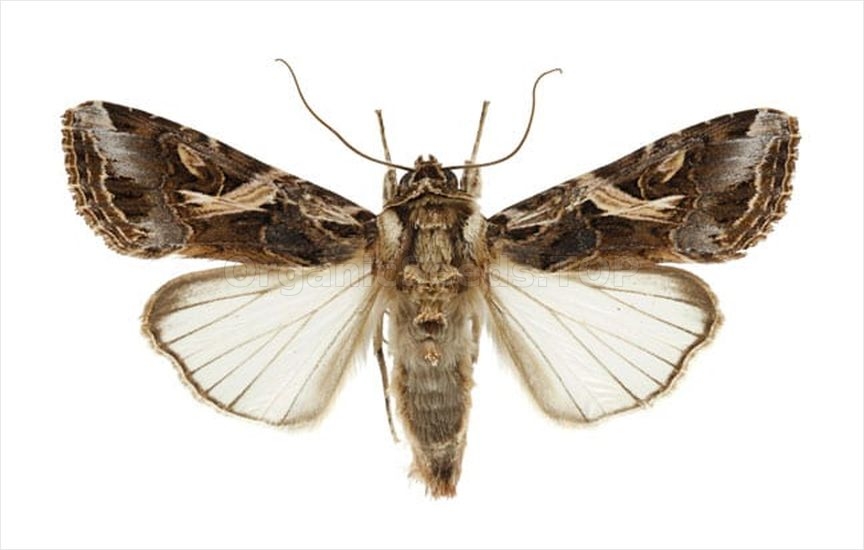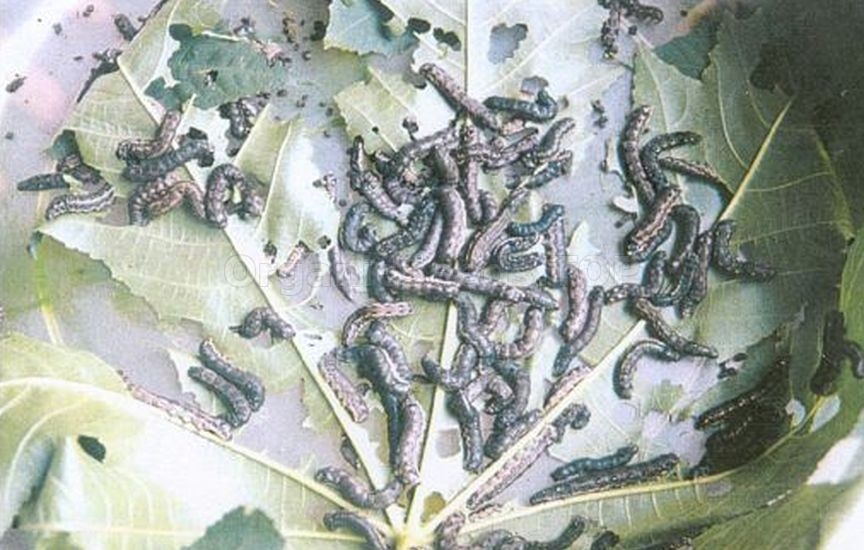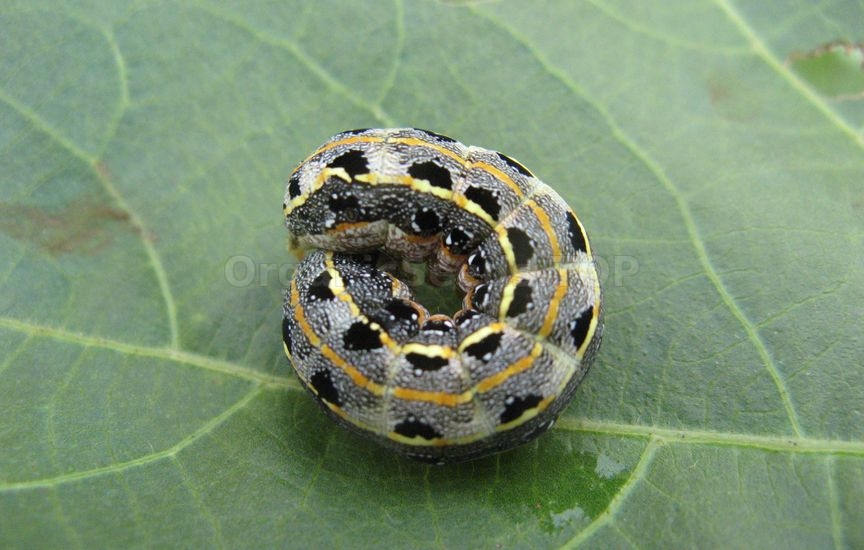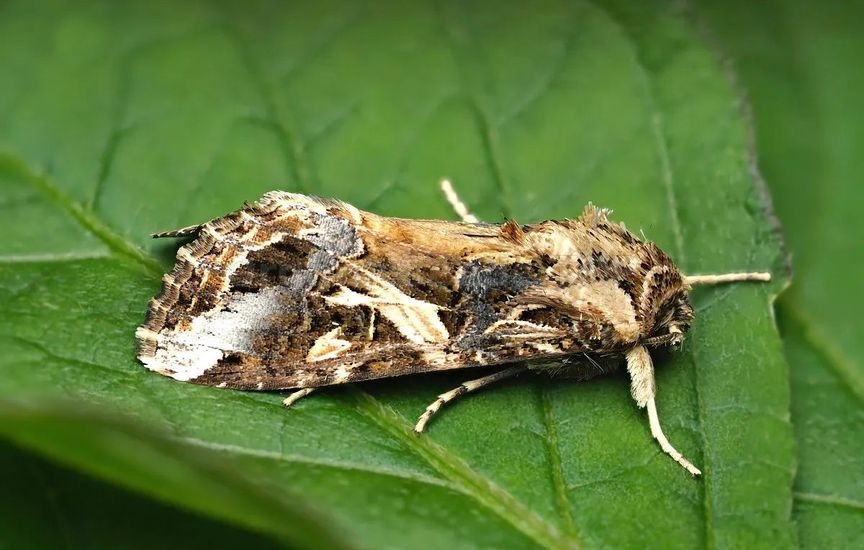Tobacco cutworm - «Spodoptera litura» |
 The tobacco cutworm - is a quarantine species and a dangerous pest of many cultivated and ornamental plants. Prefers tomato, tobacco, corn, rose, chrysanthemum and many others. Reproduction is bisexual. Development is complete. The caterpillar of the last, sixth generation overwinters in a pupa in the ground. From 4 to 8 generations develop during the season. MorphologyImago
A butterfly with a wingspan of 30-40 mm and a body length of up to 20 mm. The front wings are grayish-brown in color, with a pattern that consists of light stripes and strokes. The background of the picture is dark. A characteristic feature of the species is a pattern resembling the number 4 and a light spot near the tip of the wing. The hind wings are translucent, grayish-white, with a grayish-brown edge and dark veins. The legs, chest and abdomen of the pest are grayish-yellow (camel) in color. When at rest, the wings are folded like a roof.  Sexual dimorphism Individuals of different sexes differ in the structure of their genital organs. Egg The egg is creamy white throughout most of its development. Before the caterpillar emerges, it darkens to bluish black. Round, flattened on the lower side, shiny surface, honeycombed on the sides, diameter - 0.6 mm. The masonry is covered with light brown hairs. Larva The larva (caterpillar) has no hairs and is mostly brown in color. An adult caterpillar reaches 45 mm. The first and eighth abdominal segments of older caterpillars have large black spots. The spots are irregular in shape and may be absent in light-colored individuals. The spiracles of each segment contain a black spot. On the back there are three longitudinal lines with black and yellow splashes. The width of the head capsule is 2.9 mm. The cutting edge is serrated. Pupa The pupa is brown-walnut, 19 mm long. There are six pairs of dark spiracles on the abdominal segments. The cremaster is equipped with one pair of terminal spikes. DevelopmentImago
Butterflies are active at night. They feed on the nectar of various plants. In search of nectar and a place to lay eggs, they can travel distances of up to 2-3 km or more in one night. The lifespan of the imago is 4-10 days. Almost immediately after emerging from the pupa, the butterflies begin feeding and laying eggs.  Mating period After mating, females lay eggs on the underside of the leaves of food plants, covering them with hairs (scales) from their abdomen. Sometimes masonry can be found on other surfaces. The fertility of a female, depending on nutritional conditions, can reach 2000 eggs over the entire period and 300 in one clutch. Egg Embryonic development lasts from 2 to 12 days, on average 3-5. Larva The larva (caterpillar) undergoes complete development in six age groups. At a temperature of 25°C it is completed in 15-20 days. Caterpillars feed on leaves. In the first to third generations, the caterpillars stay in groups on the underside of the leaf blade and feed mainly in the daytime. In the fourth to sixth generations, they crawl and feed at night and early in the morning. Daytime is spent in the soil, in close proximity to the food plant. The caterpillars of the last, sixth generation overwinter in pupa in the soil. Pupa After finishing feeding, the caterpillar goes 3-5 cm deep into the soil, where it pupates. The pupal stage takes place in the soil, in an earthen cradle. At soil temperatures close to + 25°C, the development of the pupa is completed in 11-13 days.  Abiotic factorsThe full life cycle can be completed in five weeks. Depending on the climate of the area of residence, from four to eight generations develop per season.
The tobacco cutworm - is a quarantine species and a dangerous pest of various plants. Caterpillars cause damage by feeding on the leaves and generative organs of more than 80 plant species of various families. The vital activity of caterpillars reduces plant productivity. Under favorable conditions for population development, the yield is reduced by 75%. The list of forage plants of this species includes flax, cotton, jute, alfalfa, groundnuts, corn, castor beans, tobacco, rice, tomato, pumpkin, eggplant, cabbage, potatoes, physalis, cloves, roses, chrysanthemum and many other crops, including including decorative and greenhouse.
You may need:«Tobacco cutworm» trapPheromone trapsGlue trap (single adhesive cardboard) 205x125 mm |
|
|
